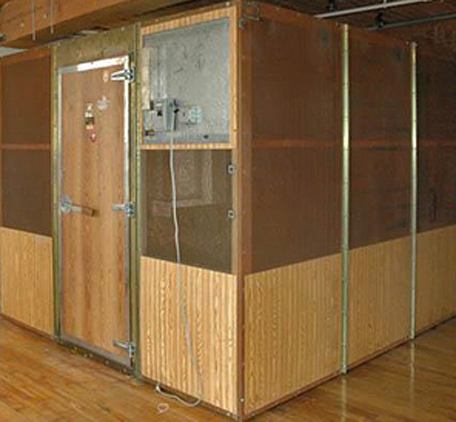





 one of the above mentioned magnet systems will produce a perfect homogeneous field, but careful design may allow for fields where the inhomogeneities are far better than 100 parts-per-million (ppm) within the region of interest. Field inhomogeneities reduce the efficiency of imaging experiments and prohibit spectroscopic investigations.
one of the above mentioned magnet systems will produce a perfect homogeneous field, but careful design may allow for fields where the inhomogeneities are far better than 100 parts-per-million (ppm) within the region of interest. Field inhomogeneities reduce the efficiency of imaging experiments and prohibit spectroscopic investigations.
To improve the field characteristics, most magnet systems are delivered with shim coils. When currents are passed through these coils, correctional fields of known geometry are produced and can compensate for the inherent inhomogeneity of the magnet.
Homogeneities better than 0.01 ppm can routinely be achieved with high-field analytical magnetic resonance magnets over small sample volumes (less than 1 cm³). Using in vivo MR spectroscopy with localized shimming, homogeneities of less than 1 ppm can be achieved for small volumes. For MR imaging where larger volumes are used, poorer homogeneity is acceptable.
The shim coils can be placed in liquid helium inside the superconducting main magnetic field and adjusted one-by-one to shape the field (active shimming).
A similar effect can be achieved by mounting small ferromagnetic metal pieces at the appropriate locations inside or outside the magnet bore. Each of these pieces will contribute to the magnetic field and, if the symmetry of the field is kept, a very homogeneous field can be obtained (passive shimming).
 Magnetic Shielding. This kind of shielding is applied to limit the fringe field of the magnet (see Figure 18-04), to compensate for inhomogeneities of the magnetic field, partly to increase the field strength, and to protect the environment.
Magnetic Shielding. This kind of shielding is applied to limit the fringe field of the magnet (see Figure 18-04), to compensate for inhomogeneities of the magnetic field, partly to increase the field strength, and to protect the environment.
Shielding can be necessary to protect the hospital environment from the magnetic field emanating from the MR system. Certain equipment and devices must not be exposed to magnetic fields, for instance nuclear cameras, CT scanners, neuro- and biostimulation devices (e.g., pacemakers), magnetic cards (e.g., credit cards), computers, disks, tapes, mechanical watches, and cameras (see Incidental Hazards).
Passive shielding involves large quantities of iron, easily 30 tons, symmetrically placed around the magnet.
Active shielding is accomplished by additional superconductive coils. Whereas the inner set of coils produces the main magnetic field, the outer set contains and reduces the fringe field which surrounds the magnet. Commonly, both sets are electrically coupled for fail-safe operation.
At 3 Tesla, for instance, active shielding can can bring down the 5-Gauss line to less than five meters from the magnetic isocenter.
 Radiofrequency (Faraday) Shielding. Table 02-01 showed that the resonance frequencies of all MR scanners overlap with commercial, military, and amateur radio and television frequencies. Electric machines can also create electromagnetic waves.
Radiofrequency (Faraday) Shielding. Table 02-01 showed that the resonance frequencies of all MR scanners overlap with commercial, military, and amateur radio and television frequencies. Electric machines can also create electromagnetic waves.
It can easily happen that the receiver of the MR imaging equipment picks up such radio signals from the outside world, which then interfere with the signals from the examined sample or patient. This leads to noisy images or, in the worst case, the complete loss of images.
Faraday shielding is used as a protection against electromagnetic interference. High-field systems require a complete Faraday cage (usually a copper cage with windows, including an electrically conducting screen), which has to be grounded. Connections from the inside of the cage to the outside have to be very carefully made and shielded (Figure 03-09).

Figure 03-09:
Simple Faraday cage. Copper covers floor, walls and ceiling of the entire room. Windows, the door and all cables connecting the room with the outside are also shielded to maintain electrical isolation. Usually — but not on this example installation — the shielding is covered with plaster and wallpapered, hiding the copper cage.